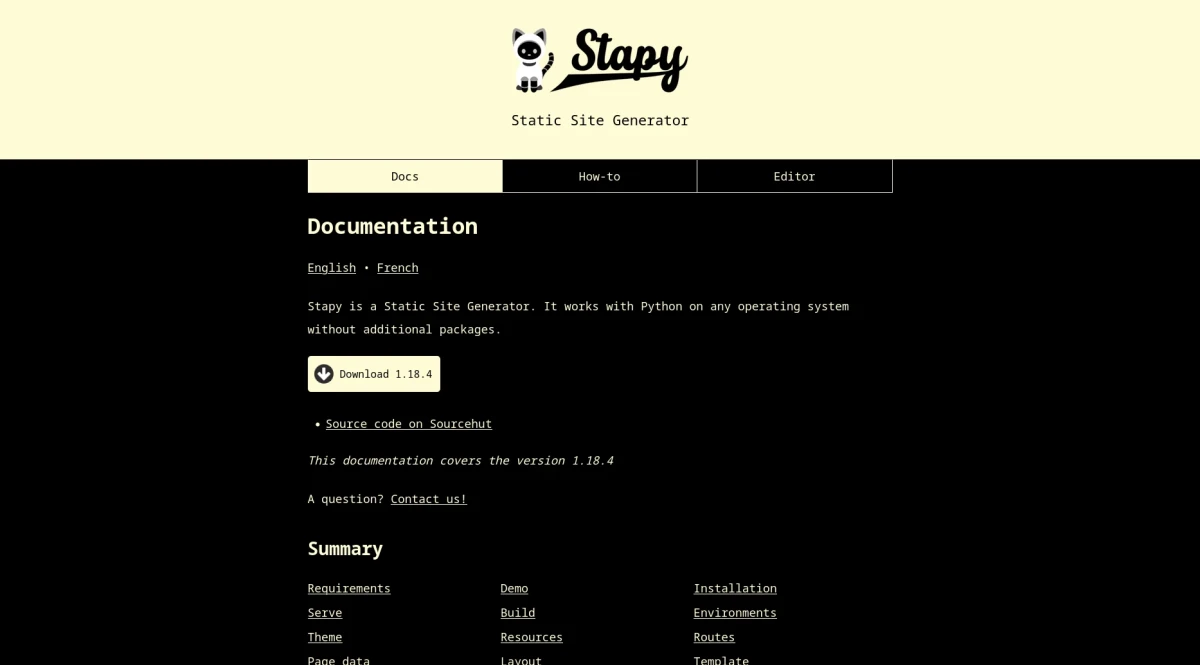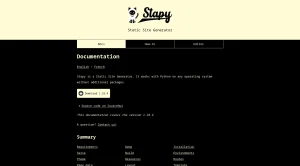

Stapy is a Static Site Generator. It works with Python on any operating system without additional packages.
Stapy is a Static Site Generator (SSG) that works with Python on any operating system without requiring additional packages.
Features:
Requirements: Stapy needs Python 3.6 or newer to function.
Installation: The latest Stapy release can be downloaded and unzipped for use.
Serving: Stapy includes an HTTP server that allows you to preview your site locally. You can start the server using
python3 stapy.pyand navigate to the displayed URL in your browser.Building: When your site is ready, you can build it for publishing using the command
python3 stapy.py build.Environments: Stapy generates static files in the
webdirectory, with subdirectories for different environments such asdevelandprod.Theme: Stapy uses themes to define the look and feel of your website. The
theme.jsonfile in thesourcedirectory specifies the theme to apply and its parent theme.Resources: Stapy copies static assets such as JavaScript, CSS, and images from the
source/assetsandthemes/{theme}/assetsdirectories into the environment directories.Routes: Stapy uses JSON files in the
source/pagesdirectory to define routes for pages. The name of the JSON file corresponds to the URL path.Page Data: The page JSON files contain the data required to generate the page, such as the template, title, and content.
Layout: Stapy uses
html.jsonfiles in thethemes/{theme}/layoutdirectory for default HTML page configurations. These layouts are merged with the page's JSON file.Template: The main template file serves as the skeleton for the page.
Plugins: Plugins allow you to add custom code when rendering the page. You can use plugins to modify file content, update page data, or handle custom HTTP responses.
Deployment: The files in your production environment (e.g.,
web/prod) must be exposed for deployment.Safe Mode: Stapy offers a safe mode that disables reserved routes and hides error messages, useful when hosting on a remote server with multiple users.
You may also be interested in ...

Lektor

preview.js

